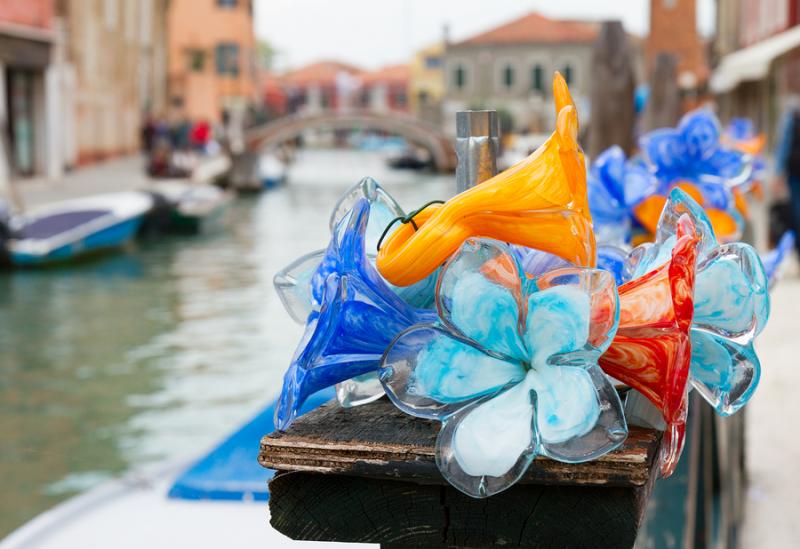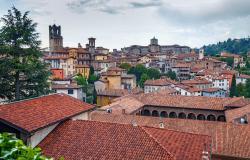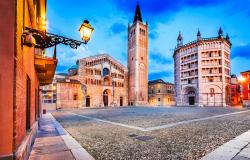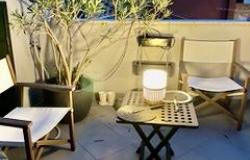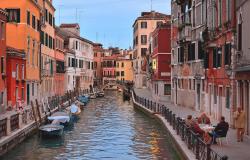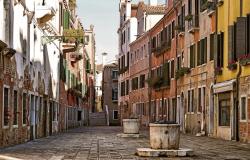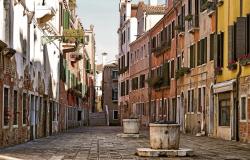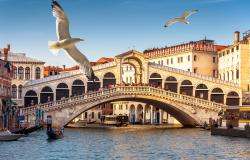The cluster of islands known as Murano emerges from a vast expanse of lagoon north of Venice. For many centuries, the shimmering waters outside the local glass workshops have inspired its world-famous artisans, and today, Murano remains synonymous with glass. With so many choices and prices, shopping on Murano can be an overwhelming experience; a little advance homework goes a long way.
A Brief History
Glass vessels dating from the Roman era have been excavated across the Veneto region. During the Middle Ages the art of glassmaking was closely linked with mosaic, as Venetian mosaicists used glass tesserae, or pieces, to create designs to decorate the floors, walls, and vaults of many of the city’s churches. By the 1220s, glassmakers were organized into guilds operating under a strict set of statutes that governed many aspects of their working conditions and daily lives.
Glassblowers came to be located on Murano for two reasons. The first was to minimize fire risk in Venice itself. The great number of glass-firing ovens—which regularly reached some 1500 degrees Celsius—produced beautiful glass objects but also initiated fires in the city. In the 1270s, city officials began to transfer glass workshops from the center of Venice to Murano to minimize risk.
The second reason to relocate glassmakers to Murano was probably political. Murano glassmaking techniques were being leaked across Europe, and sequestering glassmakers on Murano allowed the Republic to control the production and export of glass, ensuring that their trade secrets remained on the island. Glassmakers faced steep fines or even imprisonment if they traveled outside the Republic, though interestingly, glassmakers from Dalmatia, Bohemia, and elsewhere were occasionally authorized to work on Murano. Until the sixteenth century, Murano glassmakers held a monopoly on European glassmaking, and their stunning creations brought them renown across the world.

[Beautiful Murano: Photo credit: John Hann, Flickr Creative Commons]
Successful Shopping on Murano
It’s worth the trip to Murano to watch molten glass on the end of a rod be transformed as if by magic into gorgeous vases, glasses, and candlesticks before your eyes. Shopping on Murano is a bit of an art, however. Here are some tips to help you get the most out of the experience.
- Make the trip to Murano itself. Some visitors make the mistake of buying Murano glass in Venice without ever visiting the island of Murano. Don’t miss one of the most special places in the Veneto! Chances are a persistent hawker around San Marco will offer you a boat trip and an “exclusive” Murano glass factory tour. The truth is that it only costs a small fee to take the ferry to the island yourself, and once there, you will be free to visit any glassmakers you want on your own. Best of all, you’ll avoid the high-pressure sales tactics and enjoy the highlights of this quiet, beautiful island free of distraction.
- Navigate away from the docks. When you disembark at the boat ramp on the south end of Murano, move away from the area as quickly as possible, as hawkers may lure you into one of the more touristy glass factories bordering the docks that sell lower quality goods for higher prices. Instead, head toward the glass museum and window shop along the way. The farther away from the docks you walk—toward the museum and the Basilica of Santi Maria e Donato—the better the values.

[While it might be tempting to linger here, I recommend going away from the docks for the best deals]
- Start with the glass museum. In order to make sense of it all, the wonderful glass museum should be the first stop on your trip to Murano. There you will have the chance to train your eye. After viewing this impressive collection of glass from the Roman era to the present, it’s hard to imagine that today’s glass artists could come up with anything new. However, styles evolve, and rest assured that you’ll emerge from the museum with plenty left to see in the shops.
- Get in on the action. In addition to the glass museum, a tour of one or more of the glass factories is the main attraction on Murano. Even if you don’t buy there, it’s worth the trip to see the impressive glass-blowing demonstrations. You can catch a factory tour just by showing up during open hours (most remain open during the sacred Italian lunch hour). Don’t feel obliged to buy as the crowd funnels into the factory shop. There are many smaller artisan workshops that provide a more personalized experience.

[An artisan working on a custom Murano glass piece]
- Explore the hidden gems. Don’t leave Murano without visiting the Basilica of Santi Maria e Donato. This beautiful church contains a treasure—a twelfth-century floor mosaic with images of birds and other creatures, all crafted from shards of Murano glass.
How Much to Pay
Prices for Murano glass vary according to three main factors.
- The techniques used to execute the piece. You’ll pay more for more threads (the colored bands of glass swirled into a finished piece) and intricate desi.
- The repute of the maker. Some glass houses—especially Barovier & Toso, Moretti, Pauly, Seguso and Venini—command higher prices than others because of the quality of their work and the long tradition behind their names.
- If the piece is designed or signed by a big-name designer. Recently well-known fashion designers have designed pieces for some of the top glass producers, and you will pay a premium for signed pieces.

[Jewelry made with Murano Glass, Photo Credit: Nick Thompson, Flickr Creative Commons]
Getting it Home
Many of the Murano glassmakers are set up to pack and ship your treasures anywhere in the world. Some have special packing materials and containers designed for protecting glassware. Still, shipping delicate pieces home can prove both costly and hazardous. If you decide to ship, don’t forget to get the seller’s email address, record the tracking number, and insure, insure, insure.
Laura Morelli is an art historian and historical novelist with a passion for Italy. You can find her guidebook series, including Made in Venice and Made in Italy, as well as her Venice-inspired historical novel, The Gondola Maker, in the Italy Magazine shop.
